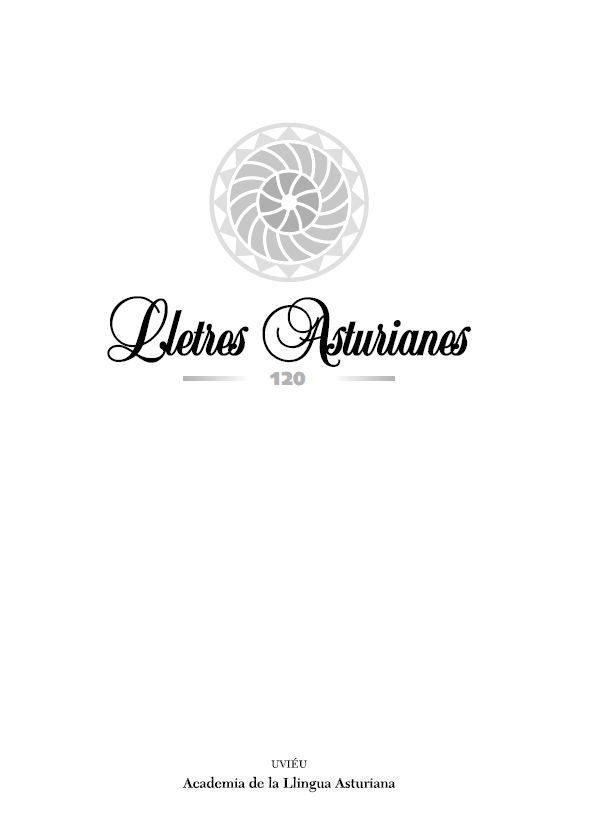Abstract
Over the course of the history of literature, many versions of the Pyramus and Thisbe myth have been made ever since Publius Ovidius Naso (Sulmo, 43 BCTomis, 17 AD), better known as Ovid, included this legend (little known until then, in his words) in his work the Metamorphoses (lines 55-166). This paper analyzes and compares the Ovidian original with the adaptation written in Asturian by clergyman and poet Benito de l’Auxa (Carreño, 1742-? 1814), edited by philologist and professor Xuan Busto Cortina in 2012. The Roman poet uses the myth to lighten the labours of the Minyades and show the metamorphosis of mulberries from white to dark (throughout the poem, myths have an explicative function). In turn, the poet from Carreño sets the story in a rural environment and depicts local customs like the esfoyaza or corn husking. The fable is used with didactic and dogmatic purposes, and an explicit moral can be seen in many of the passages that are developed, omitted or recreated: disproportionate love only leads to self-destruction and disaster. The style and the contents are in line with the standards of the period when the Asturian writer lived and with the portrayal of love during the Baroque. Likewise, the admonition present in the legend by De l’Auxa can be expected from the first octave stanzas, the sententious tone of the adaptation and the consideration for the beliefs of the church. As the editor argues, what is truly original in De l’Auxa’s interpretation of the myth is perhaps the emphasis on forthcoming economic consequences.
References
BUSTO CORTINA, Xuan Carlos (2012): Benito de l’Auxa. Antón Balvidares. Poesíes. Uviéu,
Trabe.
CORREA RODRÍGUEZ, Pedro (2001): «Jorge de Montemayor: su versión de Píramo y Tisbe»,
n’ Humanitas 53: 275-315.
– (2008): «Los romances de Píramo y Tisbe» y «Píramo y Tisbe de Antón de Marirreguera»,
en Tonos Digital. Revista Electrónica de Estudios Filológicos 15: [Fecha de consulta, 24-
-18]. Disponible en https://www.um.es/tonosdigital/znum15/.../estudios-8-Piramo%20y%
Tisbe.htm
CRISTÓBAL, Vicente (2000): «Mitología clásica en la literatura española: consideraciones generales y bibliografía», en Cuadernos de Filología Clásica. Estudios Latinos 18: 29-76.
DELGADO LEÓN, Feliciano (1992): «La fábula de Píramo y Tisbe en la literatura y su culminación en Góngora», en Boletín de la Real Academia de Córdoba 122: 37-54.
GARCÍA ARIAS, Xosé Lluis (2017): «Justo García Sánchez, Aportaciones a la cultura asturiana
del siglo XVII. Manuscritos inéditos de los años 1665-1667. Dos poemas en asturiano. Uviéu,
RIDEA, 2016», en Lletres Asturianes 116: 195-202.
GONZÁLEZ DELGADO, Ramiro (2018): «La mitoloxía clásica nos anicios de la Lliteratura Astruiana», en Lletres Astruianes 109: 145-165.
HEVIA GONZÁLEZ, M. Asunción (2001): «Mitoloxía clásica na lliteratura asturiana del sieglu
XVIII», en Lletres Asturianes 76: 55-70.
MORI D’ARRIBA, Marta M. (2017): «Dos poemes en «idioma asturiano» del sieglu XVII: los panexíricos al Obispu Spínola de Xuan García de Prada», en Lletres Asturianes 117: 109-133.
RUIZ DE ELVIRA, Antonio (19883
): Ovidio. Metamorfosis. Madrid, Alma Mater.
SÁNCHEZ VICENTE, Xuan Xosé (2004): Les producciones clasicistes d’Antón de Marirreguera. Uviéu, Trabe.
– (2017): «Sobre l’autoría de Píramu y Tisbe», en Revista de Filoloxía Asturiana 17: 147-170.
SUÁREZ GARCÍA, Pablo (2013): «La identificación de l’autoría n’asturianu», en Lletres Asturianes 109: 145-165.
VIEJO FERNÁNDEZ, Xulio (1997): Antón de Marirreguera: Fábules, teatro y romances. Uviéu,
Alvízoras Llibros.

